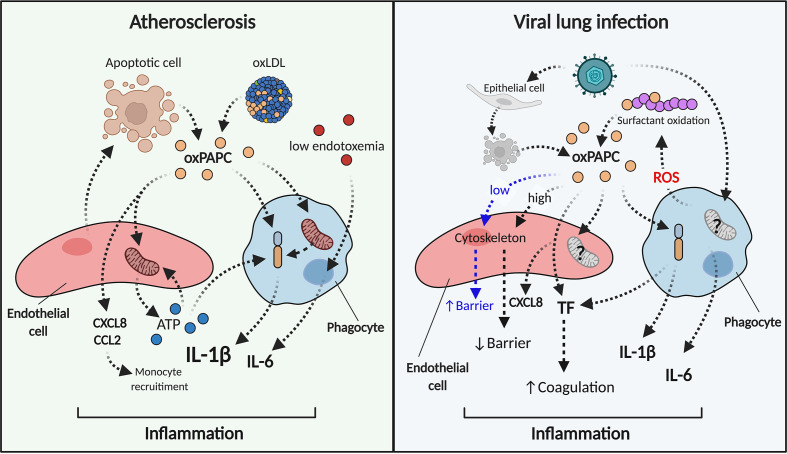Figure 2.
oxPAPC triggers and sustains inflammation in atherosclerosis and viral lung infections. During atherosclerosis (left) oxPAPC released from dying cells or contained in oxLDL induces the release of chemokines and ATP from endothelial cells (red). Phagocytes (blue) become hyperinflammatory, modify their metabolism, and produce pro-inflammatory cytokines such as IL-1β and IL-6. IL-1β can also be induced by extracellular stressors such as ATP. In this manner, the endothelial cell-phagocyte circuit sustains inflammation. During viral infections (right), oxPAPC released from infected-dead cells or from surfactant oxidation interacts with endothelial cells (red) that produce chemokines and TF. Low doses of oxPAPC (early steps of infection) elicit barrier function, while high doses of oxPAPC (late steps of infections) disrupt the endothelial barrier. Phagocytes (blue) activate inflammasome-dependent responses, secrete cytokines and TF and lead to inflammation and coagulation.

